
The Great Train Robbery is a 1903 American silent film made by Edwin S. Porter for the Edison Manufacturing Company. It follows a gang of outlaws who hold up and rob a steam train at a station in the American West, flee across mountainous terrain, and are finally defeated by a posse of locals. The short film draws on many sources, including a robust existing tradition of Western films, recent European innovations in film technique, the play of the same name by Scott Marble, the popularity of train-themed films, and possibly real-life incidents involving outlaws such as Butch Cassidy.

Last of the Dogmen is a 1995 American Western film written and directed by Tab Murphy. It stars Tom Berenger, Barbara Hershey, Kurtwood Smith, and Steve Reevis. Set in the mountains of northwest Montana, United States, the film is about a bounty hunter who tracks escaped convicts into a remote region and encounters an unknown band of Dog Soldiers from a tribe of Cheyenne Indians. The film was shot on location in Alberta and British Columbia, Canada, as well as in Mexico. Critical reviews were mixed to positive, though the film was a box office disappointment.
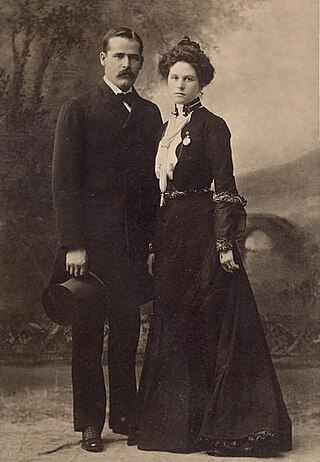
Harry Alonzo Longabaugh, better known as the Sundance Kid, was an outlaw and member of Butch Cassidy's Wild Bunch in the American Old West. He likely met Butch Cassidy during a hunting trip in 1883 or earlier. The gang performed the longest string of successful train and bank robberies in American history.

Charles E. Boles, also known as Black Bart, was an English-born American outlaw noted for the poetic messages he left behind after two of his robberies. Often called Charley by his friends, he was also known as CharlesBolton. Considered a gentleman bandit with a reputation for style and sophistication, he was one of the most notorious stagecoach robbers to operate in and around Northern California and Southern Oregon during the 1870s and 1880s.

The Dawn Rider is a 1935 American Western film starring John Wayne and directed by Robert N. Bradbury.

Seven Men from Now is a 1956 American Western film directed by Budd Boetticher and starring Randolph Scott, Gail Russell and Lee Marvin. The film was written by Burt Kennedy and produced by John Wayne's Batjac Productions.

The Iron Horse is a 1924 American silent epic Western film directed by John Ford and produced by Fox Film. It was a major milestone in Ford's career, and his lifelong connection to the Western film genre. It was Ford's first major film, in part because the hastily planned production went over budget, as Fox was making a hurried response to the success of another studio's western. In 2011, this film was deemed "culturally, historically, or aesthetically significant" by the United States Library of Congress and selected for preservation in the National Film Registry.
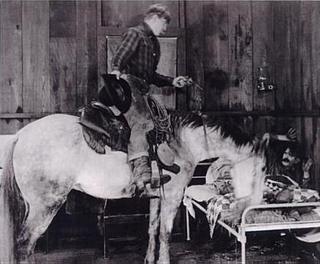
Hell Bent is a 1918 American Western film directed by John Ford and featuring Harry Carey. A print of the film exists in the Czechoslovak Film Archive.
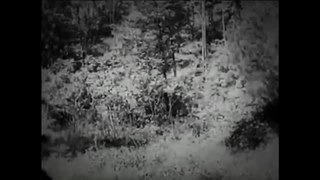
Tracked by Bloodhounds; or, A Lynching at Cripple Creek is a 1904 silent crime drama short film directed by Harry Buckwalter.
The Little Train Robbery is a 1905 American silent Western film directed by Edwin S. Porter. It is a parodic sequel/remake to Porter's 1903 film The Great Train Robbery with an all-child "cast as the robbers, and a miniature railroad and playhouse as sets."

The Skeleton Canyon shootout was a gunfight on August 12, 1896, between members of the High Five Gang and a posse of American lawmen. Following a failed robbery on August 1 of the bank in Nogales, Arizona, the High Fives headed east and split up. The gang's leader, Black Jack Christian, and George Musgrave got away.

The Canyon Diablo shootout was a gunfight between American lawmen and a pair of bandits that occurred on April 8, 1905, in the present-day ghost town of Canyon Diablo, Arizona. On the night before, two men named William Evans and John Shaw robbed a saloon in Winslow and made off with at least $200 in coins. Two lawmen pursued the bandits and on the following day they encountered each other in Canyon Diablo. A three-second shootout ensued, which was described at the time as "one huge explosion" that resulted in the death of Shaw and the wounding and capture of Evans.

William L. "Wild Bill" Carlisle was one of the last train robbers of the American West known as the "Robin Hood of the Rails" and "The White-Masked Bandit".

From Leadville to Aspen: A Hold-Up in the Rockies is a 1906 American black-and-white short silent Western film from American Mutoscope & Biograph Company. It was directed by Wallace McCutcheon and Frank J. Marion (uncredited) with G.W. Bitzer as cinematographer.
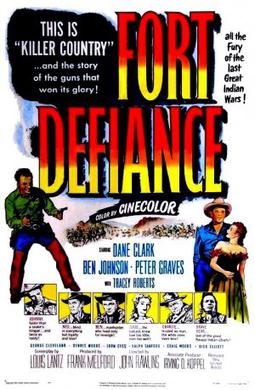
Fort Defiance is a 1951 American Western film directed by John Rawlins and written by Louis Lantz. The film stars Dane Clark, Ben Johnson, Peter Graves, Tracey Roberts, George Cleveland and Ralph Sanford. The film was released on October 9, 1951, by United Artists.
Robert Macaire and Bertrand is a 1906 French silent film directed by Georges Méliès.
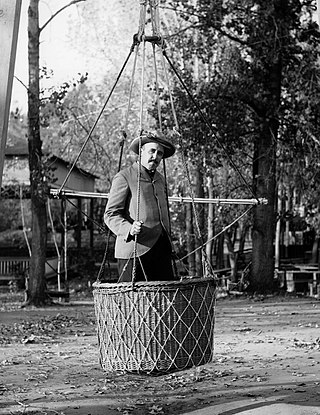
Harry Hale Buckwalter, sometimes credited as Harry H. Buckwalter or Henry H. Buckwalter, was an American photographer, journalist, photojournalist, and silent film director and producer.

The Train Wreckers is a 1905 American silent drama film, directed by Edwin S. Porter. In the film, the daughter of a railway switchman and lover of a locomotive engineer defeats outlaws trying to derail a train.
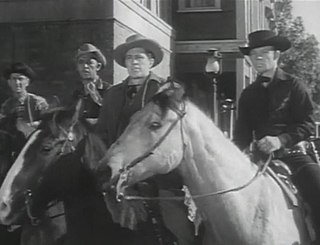
Luther Palmer was an American film and television actor. He appeared in over 300 films and television programs between 1929 and 1962.



















